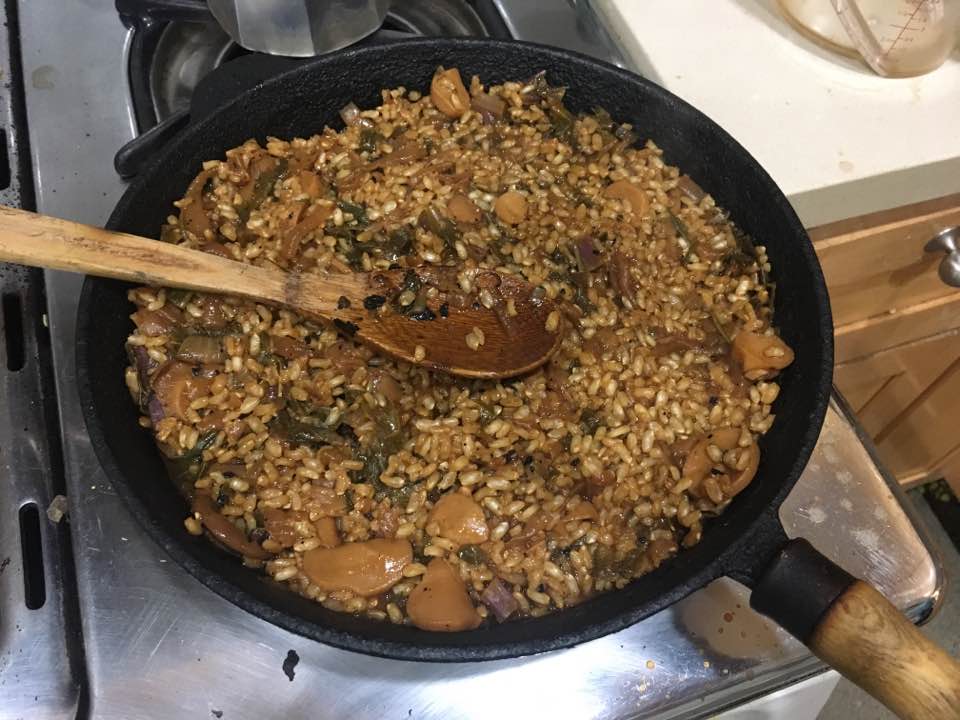I had just finished eating leftover mejedderah when Chad called me to announce we were going to have four guests for dinner–all four of them fierce martial artists just out of a four-day tournament! Easy peasy – a nice risotto, served with some vegetables and dip and gazpacho, did the trick.
For the rice I used whole-grain arborio, which is not very easy to find on the shelves but you can order it here. It has the glutinous quality of its white cousin with more nutritional goodness. I also had trumpet mushrooms, which slice beautifully into rounds, some greens, a heap of caramelized onions, and lots of stock.
Ingredients:
1-2 tsp olive oil
1 1/2 cup onions, thinly sliced
1 cup sliced trumpet mushrooms
2 cups greens (kale, collards, chard), chopped into small bites
2 cups brown arborio rice
6 cups vegetable stock
2 tbsp nutritional yeast
2 tbsp fresh rosemary
2 tbsp fresh oregano
salt and pepper to taste
Preparation:
Heat up olive oil in a large pan. Add the onions and toss about until caramelized (this could take you a good ten minutes.) Add the mushrooms, greens, and rice, and toss for a few more minutes. Then add 1 cup of stock, bring to a boil, then lower the heat and cover the pan. Cook until almost absorbed. Then, add another cup of stock, plus the yeast and half the herbs. Repeat the process by which you let simmer until almost absorbed and then add another cup until all stock has been added. When all stock is absorbed and the rice is fully cooked, place in serving bowls and sprinkle the remaining half of the herbs. Enjoy!





